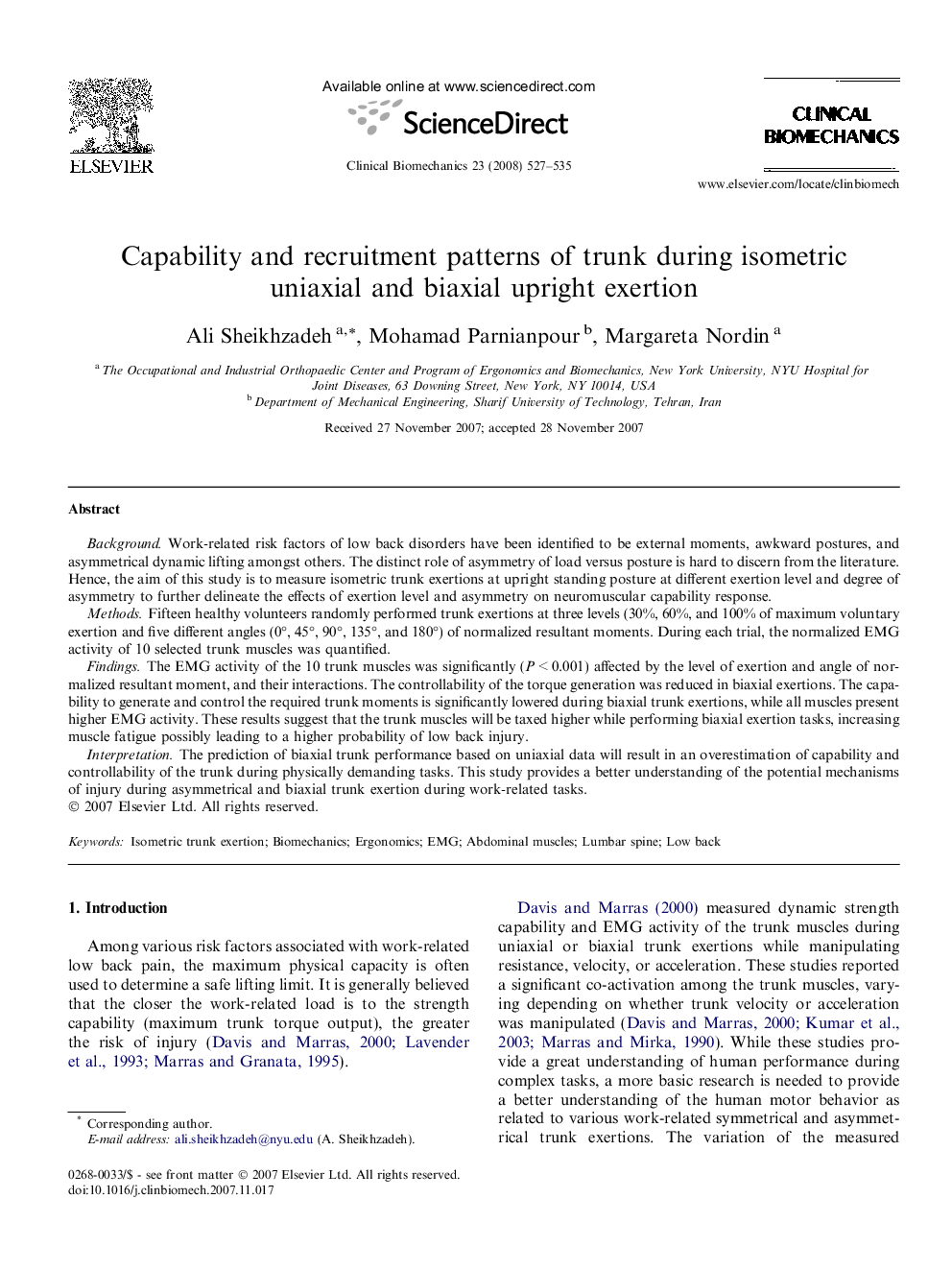| کد مقاله | کد نشریه | سال انتشار | مقاله انگلیسی | نسخه تمام متن |
|---|---|---|---|---|
| 4051458 | 1264994 | 2008 | 9 صفحه PDF | دانلود رایگان |

BackgroundWork-related risk factors of low back disorders have been identified to be external moments, awkward postures, and asymmetrical dynamic lifting amongst others. The distinct role of asymmetry of load versus posture is hard to discern from the literature. Hence, the aim of this study is to measure isometric trunk exertions at upright standing posture at different exertion level and degree of asymmetry to further delineate the effects of exertion level and asymmetry on neuromuscular capability response.MethodsFifteen healthy volunteers randomly performed trunk exertions at three levels (30%, 60%, and 100% of maximum voluntary exertion and five different angles (0°, 45°, 90°, 135°, and 180°) of normalized resultant moments. During each trial, the normalized EMG activity of 10 selected trunk muscles was quantified.FindingsThe EMG activity of the 10 trunk muscles was significantly (P < 0.001) affected by the level of exertion and angle of normalized resultant moment, and their interactions. The controllability of the torque generation was reduced in biaxial exertions. The capability to generate and control the required trunk moments is significantly lowered during biaxial trunk exertions, while all muscles present higher EMG activity. These results suggest that the trunk muscles will be taxed higher while performing biaxial exertion tasks, increasing muscle fatigue possibly leading to a higher probability of low back injury.InterpretationThe prediction of biaxial trunk performance based on uniaxial data will result in an overestimation of capability and controllability of the trunk during physically demanding tasks. This study provides a better understanding of the potential mechanisms of injury during asymmetrical and biaxial trunk exertion during work-related tasks.
Journal: Clinical Biomechanics - Volume 23, Issue 5, June 2008, Pages 527–535